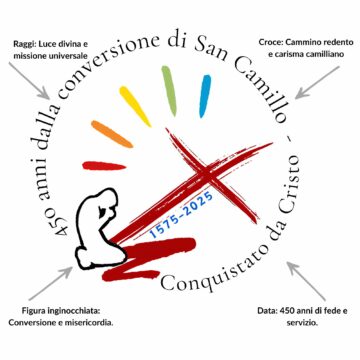In a previous edition, reference was made to a consensus document[1] of various Italian medical associations and societies who agreed to introduce palliative care in their specific fields of activity. This document pointed to the conditions for its application and thus overcame the idea that palliative care is only for cancer patients. Recent research carried out at the ‘Padre L. Tezza’ Hospice of Capriate S. G. (BG) confirms this practice and points to an – albeit low – percentage of non-cancer patients receiving palliative care during the terminal stages of their illness. Indeed, during the year covered by this research about 14% of patients did not have cancer but nonetheless met the conditions for their admission.
In order to understand the scale of the problem and the need to extend palliative care to chronic pathologies that do not involve cancer, one should refer to data that ‘demonstrate that most of the most gravely ill patients who have higher death rates are specifically those with chronic organ insufficiency which constitutes an important determinant of death that cannot be changed by admission to intensive care units’. Indeed, we often witness a form of exaggerated treatment – or difficulty in accepting that the illness will lead to death – which involves resort to constant admissions to hospital, without there being any real effect on the prognosis. We should thus change direction (home – hospital) and introduce the hospice as a possible destination for those cases where it is felt that any further invasive medical action could be inappropriate and not proportionate, as well an economically expensive: ‘to sum up, the problem presents itself of balancing the new powers of intervention that are made available by biotechnology and pharmacology both with the quality of remaining life that can still be assured to these patients and with a relative reduction in available resources and a correlated need for their rationalisation’.
From the point of view of the thinking and philosophy of palliative care, its application to pathologies that do not involve cancer is very much recommended when, as is the case with cancer patients at the end of their lives, the objective of treatment is the centrality of the sick human person who should be cared for with dignity where active approaches to the illness no longer exist. Equally in line with the thinking and philosophy of palliative care is the attention that is paid to the nuclear family of a patient. This family is often weighed down and devastated by chronic and steadily incapacitating illnesses and is equally in need of support and active participation in the decisions that are taken during the last period of their loved ones’ lives, from which, however, the family is frequently excluded during the admissions to hospital that take place before the patient’s actual death. Lastly, palliative care in the field of illnesses that do not involve cancer offer a new, human and dignified pathway that takes into account two equidistant risks: that of exaggerated treatment, on the one hand, and that of therapeutic abandonment, on the other.
Pathologies that do not involve cancer have clinical and care-requiring characteristics that do not always make the beginning of the provision of palliative care (difficulties in identifying a correct prognosis, the hope on the part of family relatives and those providing care of a good recovery, and the tendency of those administering palliative care to privilege taking responsibility for cancer patients) easy and immediate. In addition, the care for patients with worsening chronic illnesses raises a series of ethical questions that those who provide palliative care have to address. It is helpful to refer to them here, not least to understand the difficulties that those who provide palliative care can encounter.
Although no instrument of prognosis – taken individually – is universally recognised as being able to predict the duration of the survival of terminal cancer patients, there nonetheless exist models that can provide an accurate indication. Such instruments are not available for forms of illness that do not involve cancer and an ascertainment of the duration of the lives of patients with these illnesses and the moment that is appropriate for the beginning of palliative care and the sending of patients to residential institutions such as hospices, is based upon the experience of those who provide palliative care (‘clinician predictions of survival’). We may take for granted that the decision about the moment when treatment should be suspended or reduced strengthens the irremovable wish of the family relatives to heal their loved one.
The terminal character of patients with chronic degenerative illnesses has a slow development that is marked by intensifications of the illness (or secondary illnesses) and improvements (at the present time it is estimated that the terminal stage of these pathologies lasts from six to twelve months). A person with a form that does not involve cancer has a performance capacity that is generally lower than is the case with a cancer patient, but without the rapid collapse that the latter displays during the critical stage of the illness. The last months of such a patient are characterised by frequent admissions; by an incapacity to perform habitual functions; and by a constantly increasing level of dependence. For this reason, admission to a hospice often lasts longer than is the case with a cancer patient and this has inevitable repercussions at an emotional level.
The increasingly acute character of the basic illness during the terminal stage requires therapeutic action directed toward a reduction in the impact of the illness and a retrieval of normal physiological functioning. This is the case, for example, with the use of antibiotics as a therapy with secondary infections. From a conventional point of view, palliative care is hesitant in the case of active and specific forms of therapy such as antibiotics, transfusions and medical products that act more on the causes than the symptoms of the illness. This is a controversial and debated subject which can find a justification in the objective of improving quality of life and of making symptoms that would otherwise be unbearable less painful. In these cases, indeed, what is sought is not the defeat of the illness but the wellbeing of the patient.
Some pathologies that do not involve cancer envisage the use of supports designed to maintain or retrieve vital physiological activities. This is especially so in heart diseases that use devices that can be implanted (pace makers or defibrillators). At the terminal stage of the illness, the debate about whether they should be kept or not continued is as relevant as ever, and this takes into account the diminished clinical conditions of the patient and his or her legitimate wish not to protract the malaise or suffering , to which – at times – these devices that can be implanted contribute, as is the case with a defibrillator. This is a subject of an ethical character that those who work in the field of palliative care have to address.
Palliative care is an offer of quality during the course of chronic illnesses that are progressively degenerative. They assure a proportionate response to the need for care and relief that is experienced by patients and their loved ones, who, indeed, are often exhausted by long periods of admission, relapses and illusory recoveries. Lastly, palliative care is offered as ‘medicine centred on the patient and his or her family which, through a palliative approach, values his or her need for self-determination in the interests of his or her quality of life and dignity’.
[1] SIAARTI, “Grandi insufficienze d’organo end stage: cure intensive o cure palliative? Documento condiviso per una pianificazione delle scelte di cura”, 2013. This article contains some statements from this work in quotation marks.












Camillians on Facebook
Camillians on Twitter
Camillians on Instagram